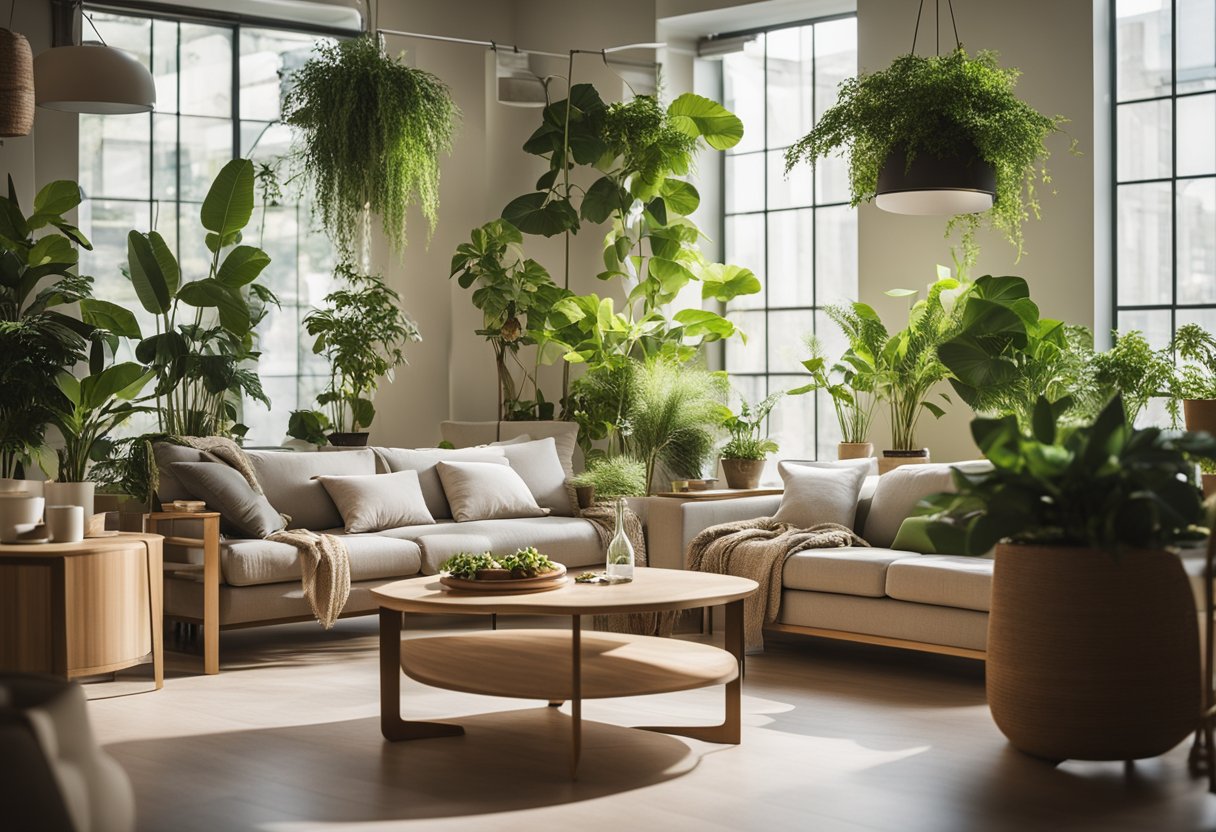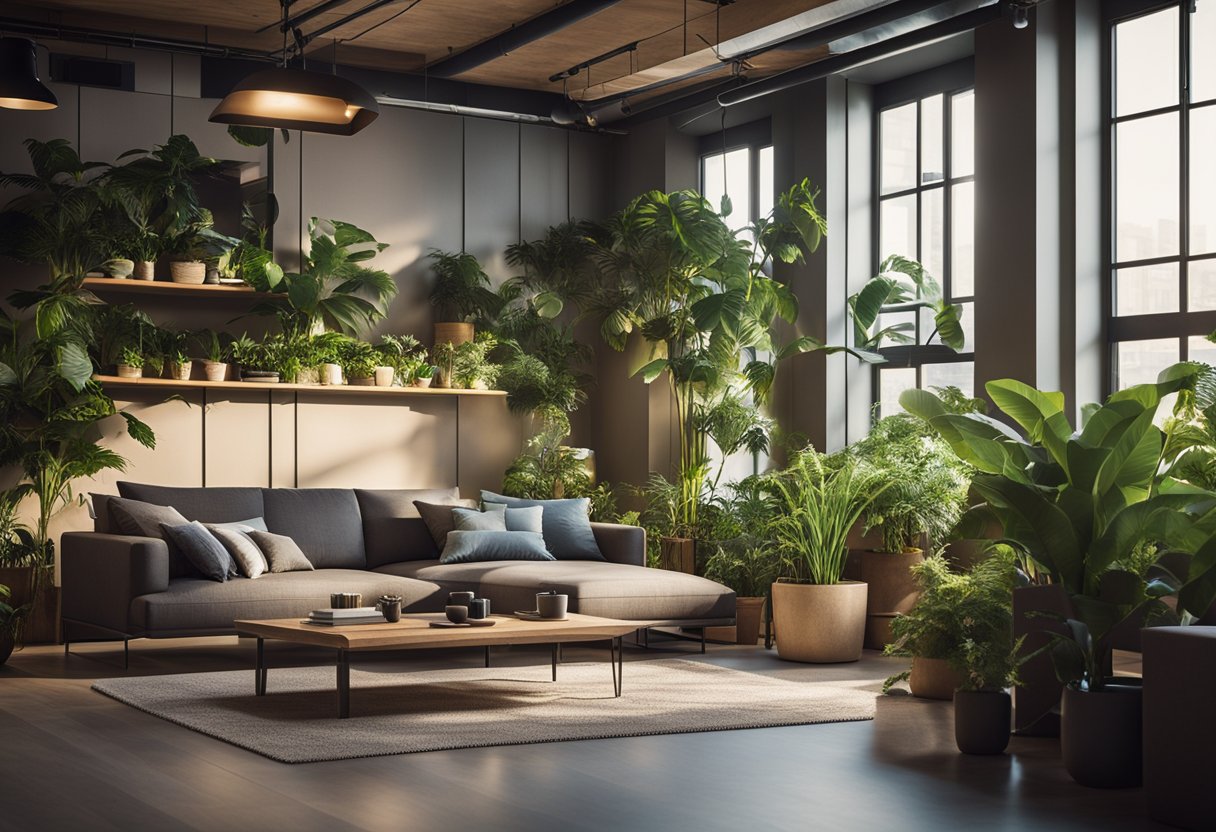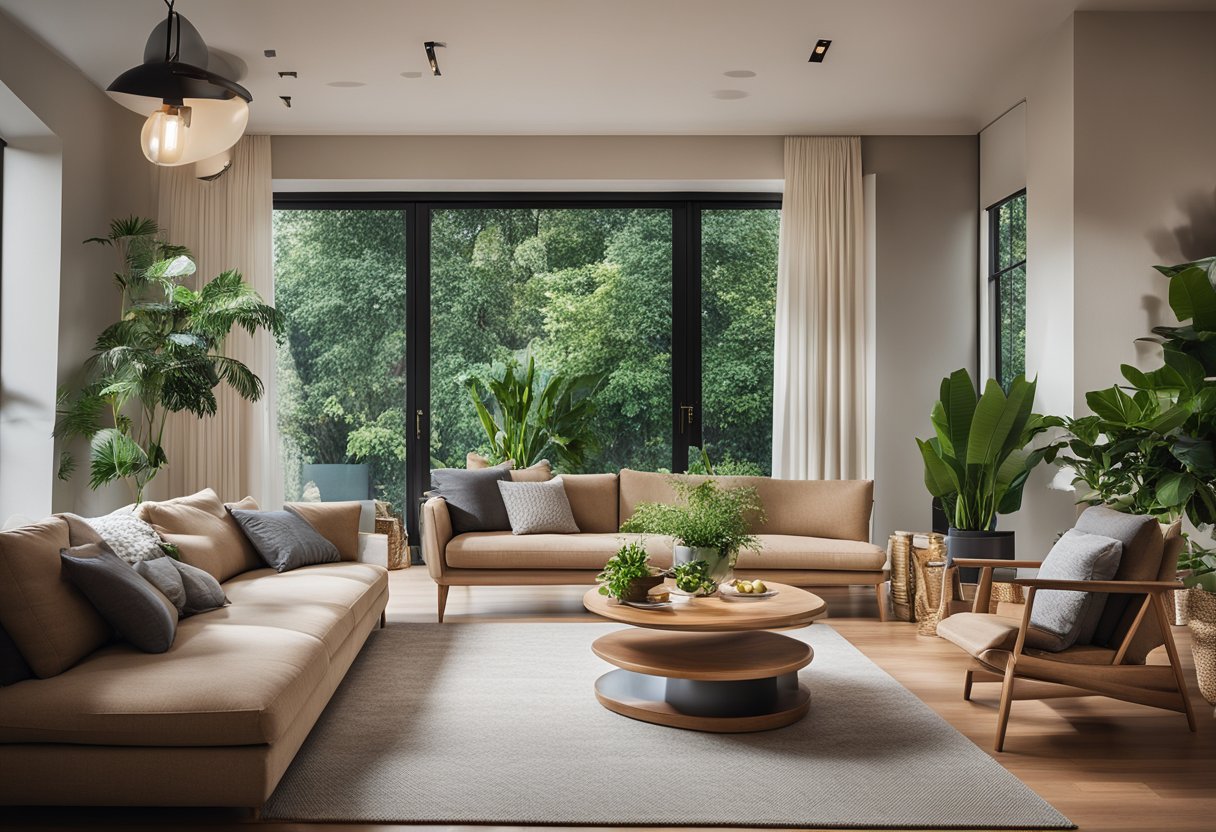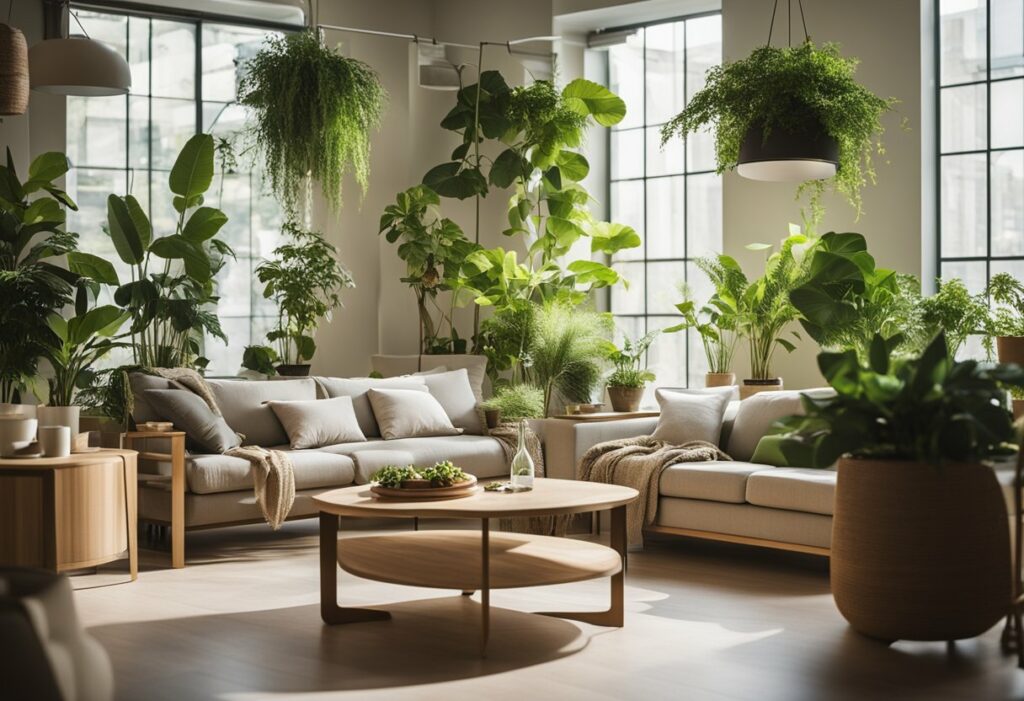Sustainable Practices in Interior Design: Creating a Greener Future for Your Home
Sustainable practices in interior design are becoming increasingly popular as people become more conscious of their environmental impact. Sustainable interior design is the practice of creating spaces that are environmentally responsible and aesthetically pleasing. It is about reducing waste, conserving natural resources, and creating healthier living environments.

Core principles of sustainable interior design include reducing the use of products that cause harm to the environment, using eco-friendly materials, and incorporating energy-efficient systems. This means using materials that have a low environmental impact, such as bamboo, cork, and recycled materials. It also means designing spaces that are energy-efficient, using natural light, and incorporating renewable energy sources.
Practical implementation and case studies show that sustainable interior design is achievable and can have a positive impact on the environment. Many designers and architects are incorporating sustainable practices into their work, and there are numerous examples of sustainable buildings and spaces around the world. Sustainable interior design is not only good for the environment, but it can also improve the health and wellbeing of the people who inhabit those spaces.
Key Takeaways
- Sustainable interior design is about creating environmentally responsible and aesthetically pleasing spaces.
- Core principles of sustainable interior design include reducing the use of harmful products, using eco-friendly materials, and incorporating energy-efficient systems.
- Sustainable interior design is achievable and can have a positive impact on the environment and the health and wellbeing of people.
Core Principles of Sustainable Interior Design

Sustainable interior design is a holistic approach to creating spaces that are environmentally responsible, socially conscious, and economically viable. It is about balancing the needs of the planet, people, and profit, and creating spaces that are not only beautiful but also sustainable. Here are some core principles of sustainable interior design that can guide your choices and help you create spaces that are both stylish and eco-friendly.
Material Selection and Sourcing
The materials you choose for your interior design projects have a significant impact on the environment. When selecting materials, it is essential to consider their environmental impact, including their life cycle, renewability, and sustainability. Opting for renewable resources, such as bamboo, cork, and FSC-certified wood, can help reduce your carbon footprint. Similarly, choosing materials that are recyclable, biodegradable, or made from recycled materials can also help reduce waste and greenhouse gas emissions.
Energy and Resource Efficiency
Energy and resource efficiency are essential components of sustainable interior design. By opting for energy-efficient lighting, appliances, and fixtures, you can reduce your energy consumption and save money on your utility bills. Solar panels, rainwater harvesting, and greywater systems can also help you reduce your reliance on fossil fuels and conserve water. Additionally, choosing materials and products that are durable, long-lasting, and require minimal maintenance can help you save money in the long run.
Health and Environmental Quality
Sustainable interior design is not just about the environment; it is also about creating healthy and safe spaces for people. Opting for non-toxic materials, such as natural paints, finishes, and adhesives, can help improve indoor air quality and reduce the risk of health problems associated with volatile organic compounds (VOCs). Proper ventilation, natural lighting, and biophilic design can also help improve the overall health and wellbeing of occupants.
In summary, sustainable interior design is about making eco-friendly choices that promote environmental stewardship, responsible consumption, and innovative solutions. By following these core principles of sustainable interior design, you can create spaces that are both beautiful and sustainable, while also reducing your impact on the planet.
Practical Implementation and Case Studies

When it comes to implementing sustainable practices in interior design, there are a variety of innovative options available to you. In this section, we’ll explore some practical examples of how you can incorporate eco-friendly choices into your design plans.
Innovative Use of Space and Furniture
One of the most exciting trends in sustainable interior design is the innovative use of space and furniture. By choosing multifunctional furniture pieces, you can maximise the use of a room while minimising the amount of furniture you need. This not only saves space but also reduces the amount of resources needed to produce and transport furniture.
For example, if you’re setting up a home office, consider investing in ergonomic furniture that can be easily adjusted to suit your needs. This not only ensures that you’re comfortable while you work but also reduces the need for additional furniture pieces.
Sustainable Practices in Action
Another way to incorporate sustainable practices into your interior design plans is by choosing eco-friendly materials that are free from harmful chemicals like formaldehyde. You can also opt for recycled content materials to reduce waste and promote recycling.
When it comes to furniture, consider using second-hand pieces or investing in sustainable furniture made from eco-friendly materials. This not only reduces the amount of waste going to landfill but also supports sustainable practices in the furniture industry.
One great example of sustainable practices in action is the Rustic Furniture Company, which creates beautiful furniture pieces using reclaimed wood. By using salvaged wood, the company reduces waste and promotes the use of sustainable materials in the furniture industry.
By implementing these sustainable practices in your interior design plans, you can create a beautiful and eco-friendly space that promotes sustainability and reduces your impact on the environment.
Frequently Asked Questions

How can we incorporate eco-friendly materials into home decor?
Incorporating eco-friendly materials into your home decor is an excellent way to contribute to sustainable interior design. You can use materials such as bamboo, reclaimed wood, and recycled glass tiles for flooring, furniture, and decorative elements. You can also opt for energy-efficient lighting and appliances to reduce your carbon footprint. Additionally, you can use fabrics made from natural fibers such as cotton, linen, and wool, which are renewable and biodegradable.
What are the top sustainable approaches for residential interiors?
The top sustainable approaches for residential interiors include using eco-friendly materials, maximizing energy efficiency, and incorporating biophilic design principles. You can use materials such as recycled or upcycled furniture, eco-friendly flooring, and low VOC paint to make your home more sustainable. You can also use natural lighting and ventilation to reduce energy consumption and incorporate plants and natural elements to promote well-being.
In what ways can energy efficiency be maximised in interior design?
Energy efficiency can be maximized in interior design by using energy-efficient lighting, appliances, and HVAC systems. You can also use natural lighting and ventilation to reduce energy consumption. Additionally, you can incorporate insulation and shading systems to reduce heat loss and gain. You can also use smart home technology to control energy consumption and reduce waste.
Which certifications should we look for in sustainable furniture?
When looking for sustainable furniture, you should look for certifications such as Forest Stewardship Council (FSC) and Programme for the Endorsement of Forest Certification (PEFC), which certify sustainably sourced wood. You can also look for certifications such as Cradle to Cradle (C2C) and Global Organic Textile Standard (GOTS), which certify the sustainability of the entire product lifecycle, from sourcing to disposal.
How do biophilic design principles contribute to sustainability?
Biophilic design principles contribute to sustainability by incorporating natural elements into interior design, which promotes well-being and reduces stress. Biophilic design principles include using natural lighting, incorporating plants and natural materials, and providing views of nature. By incorporating these principles, you can reduce the need for artificial lighting and ventilation, which reduces energy consumption and promotes sustainable living.
What strategies are there for waste reduction in interior design projects?
There are several strategies for waste reduction in interior design projects, including using recycled or upcycled materials, reducing packaging waste, and donating or repurposing old furniture and decor. You can also incorporate modular design, which allows for easy disassembly and reuse of materials. Additionally, you can work with suppliers and contractors who prioritize sustainability and waste reduction in their operations.



